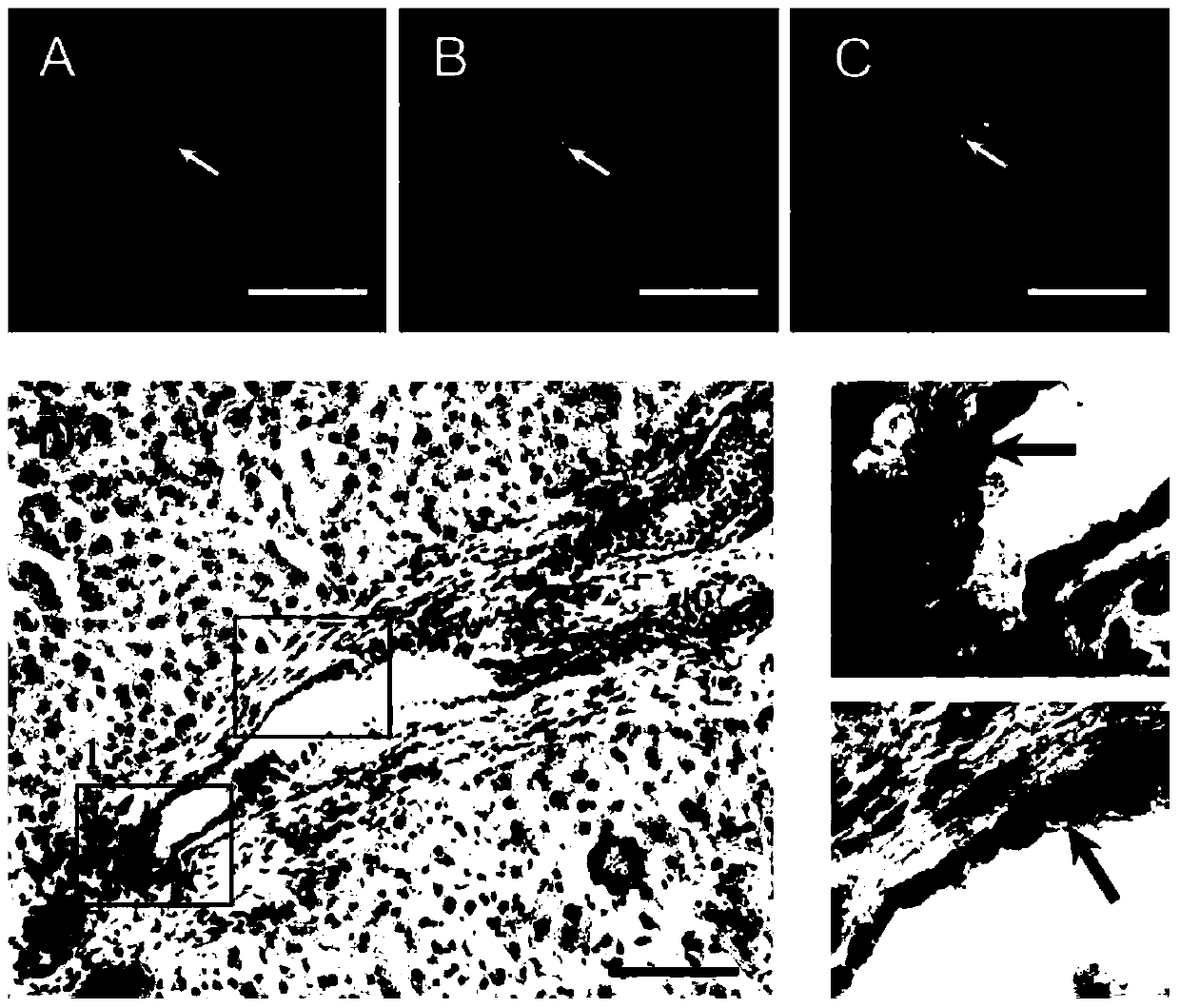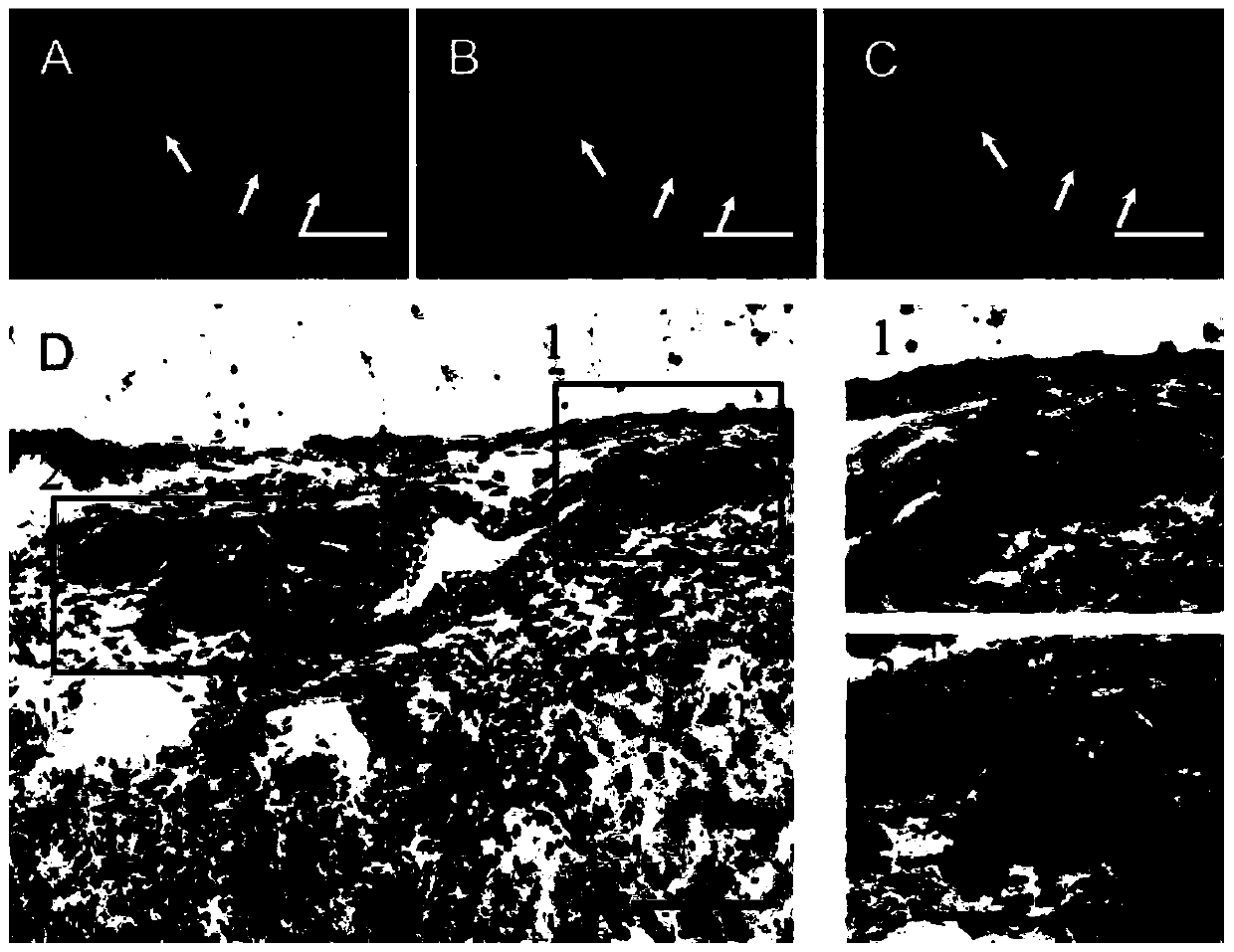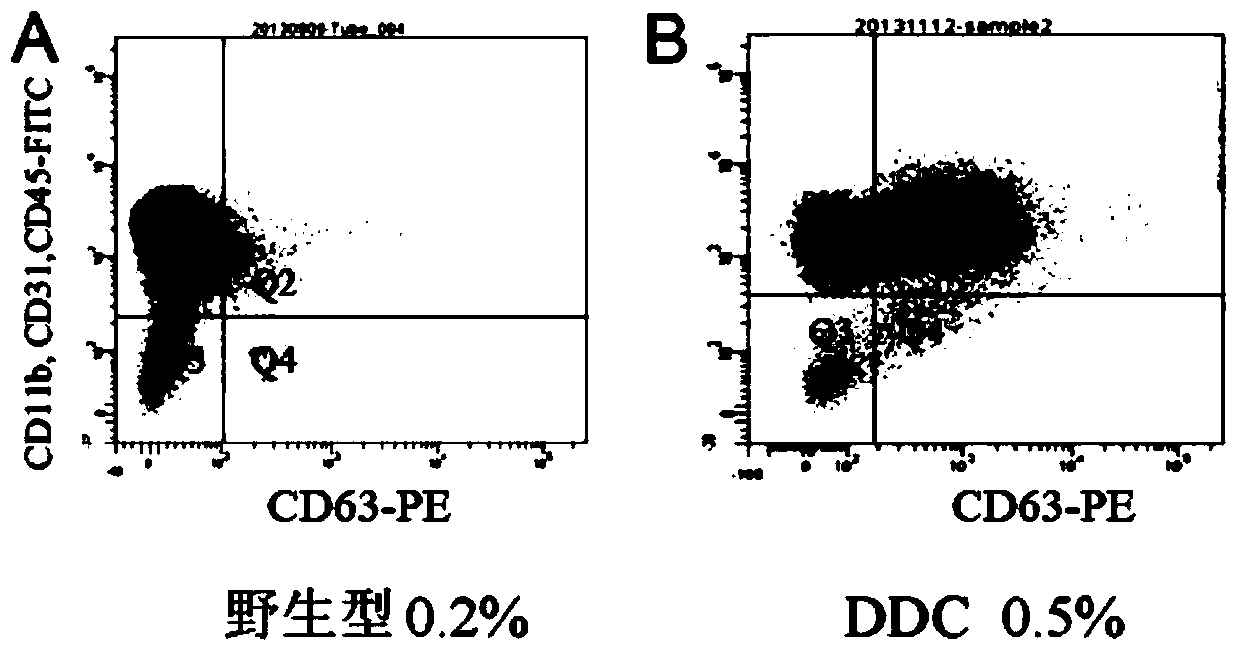Specific surface molecular marker cd63 of liver stem cells and its application
A technology of hepatic stem cells and CD63, applied in the field of medicine and bioengineering, can solve the problems of the method of specific separation and purification of hepatic stem cells, the low purity of hepatic stem cells, and the inability to effectively distinguish hepatic stem cells from bile duct cells.
- Summary
- Abstract
- Description
- Claims
- Application Information
AI Technical Summary
Problems solved by technology
Method used
Image
Examples
Embodiment 1
[0083] Example 1. Localization of CD63 hepatic stem cells in the liver
[0084] 1. Normal liver and liver after 3 weeks of DDC-induced biliary reaction (Preisegger KH, Factor VM, Fuchsbichler A, Stumptner C, Denk H, Thorgeirsson SS, Atypical ductular proliferation and its inhibition by transforming growth factor beta1 in the 3,5-diethoxycarbonyl- 1,4-dihydrocollidine mouse model for chronic alcoholicliver disease, Lab Invest.79(2):103-109) was embedded with OCT embedding agent (product number: 4583, purchased from SAKURA company), and the frozen section was 7um thick. Fix with 4% paraformaldehyde (PFA) (product number: P-6148, purchased from Sigma) at room temperature for 10 minutes, remove the fixative, and wash three times with PBS (product number: BS7016, purchased from Sangon Bioengineering (Shanghai) Co., Ltd.) , stored at 4°C for later use.
[0085]2. Immunofluorescence staining: After blocking the liver section treated in step 1 with 1% BSA (product number: A1933, purc...
Embodiment 2
[0088] Example 2. Rapid isolation and expansion of CD63-positive hepatic stem cells
[0089] 1. Two-step in situ collagenase perfusion digested liver (Wang MJ1, Chen F, Li JX, Liu CC, Zhang HB, Xia Y, Yu B, You P, Xiang D, Lu L, Yao H, Borjigin U, Yang GS, Wangensteen KJ, He ZY, Wang X, Hu YP, Reversal of hepatocyte senescence after continuous in vivo cellproliferation, Hepatology.60(1):349-361.), the digestion mixture continued to be digested with 0.25% collagenase (product number: 11088858001, purchased from Roche) and incubated at 37°C for 30 minutes.
[0090] 2. Centrifuge the digested cell suspension at 50g centrifugal force twice for 30 minutes at low speed, discard the precipitate (large hepatocytes), collect the supernatant and continue to centrifuge at 300g centrifugal force for 5 minutes, and use serum-free DMEM medium (product number: SH30022.01 , purchased from Hyclone Company) resuspended cells, counted, and diluted the cells to 10 7 / ml, using OptiPrep TM Den...
Embodiment 3
[0096] Example 3. Differentiation of CD63-positive liver stem cells into mature hepatocytes
[0097] 1. Press 5×10 4 cells / cm 2 Sow CD63-positive hepatic stem cells on type 1 collagen-coated 35mm culture dishes, add SCM-A medium, and store at 37°C, 5% CO 2 Cultivate in the incubator until the cells are congested, and change the medium every other day.
[0098] 2. After the cells are overgrown, replace the liver induction medium (DMEM / F12, 10% FBS, 10ng / ml HGF, 10ng / mlEGF, 10-7M Dex, 1% DMSO, 10ng / ml OSM, 20% Matrigel) to continue Cultured for 6 days, the medium was changed every other day.
[0099] 3. Detection of mature hepatocytes formed by induction and differentiation of CD63-positive liver stem cells: the cells formed after induction were collected to extract RNA, and Real-Time detection showed that the expression levels of markers (Abcg2, CK19, Gja1, Ggt1) of stem cells and cholangiocytes Compared with before induction, the expression levels of liver cell markers (Al...
PUM
 Login to View More
Login to View More Abstract
Description
Claims
Application Information
 Login to View More
Login to View More - R&D
- Intellectual Property
- Life Sciences
- Materials
- Tech Scout
- Unparalleled Data Quality
- Higher Quality Content
- 60% Fewer Hallucinations
Browse by: Latest US Patents, China's latest patents, Technical Efficacy Thesaurus, Application Domain, Technology Topic, Popular Technical Reports.
© 2025 PatSnap. All rights reserved.Legal|Privacy policy|Modern Slavery Act Transparency Statement|Sitemap|About US| Contact US: help@patsnap.com



